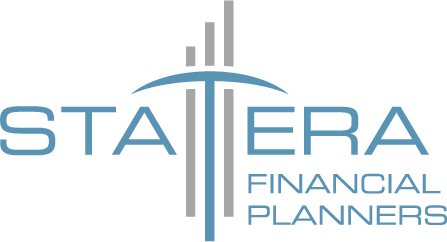Investing Wisely: Ways to Save for Retirement

Investing Wisely: Ways to Save for Retirement
Many Canadians struggle to save enough for retirement. This article explores strategies to build retirement savings, including maximizing contributions and choosing the right savings accounts. By understanding investment risks and rewards, you'll be better equipped to secure your financial future.
Key Takeaways
- Diversifying investments across asset classes helps balance risk and potential returns for retirement savings
- Considering inflation is crucial when calculating future retirement expenses and determining appropriate savings strategies
- RRSPs and TFSAs offer tax advantages and flexibility for retirement savings in Canada
- Employer-sponsored pension plans can significantly boost retirement savings through matching contributions and professional management
- Regularly reviewing and adjusting investment strategies is essential for maintaining an effective retirement plan
Understand the Importance of Saving for Retirement
Understanding the importance of saving for retirement is crucial for financial security. This section explores how retirement savings protect against inflation, the significance of financial literacy, and the role of pensions in retirement planning. It also provides insights into investment strategies for different life stages, offering practical guidance for long-term financial well-being.
Recognize How Retirement Savings Ensure Financial Security
Retirement savings play a crucial role in ensuring financial security during one's golden years. By consistently setting aside funds and investing wisely, individuals can build a substantial nest egg that provides a stable income stream in retirement. This approach helps protect against economic uncertainties and allows retirees to maintain their desired lifestyle without relying solely on government pensions or social security benefits. Effective retirement management involves diversifying investments across various asset classes, including stocks and bank savings accounts, to balance risk and potential returns:
Investment Type | Risk Level | Potential Return |
Stocks | High | High |
Bonds | Medium | Medium |
Savings Accounts and GICs | Low | Low |
Assess the Impact of Inflation on Future Retirement Needs
Inflation erodes purchasing power, making it essential to account for rising costs when calculating retirement expenses. A conservative inflation rate of 2-3% is recommended to determine appropriate savings strategies and maintain your lifestyle in retirement.
Evaluate Different Stages of Life for Retirement Planning
Retirement planning varies by life stage, requiring tailored strategies. In early career stages, maximize contributions and manage debt. As careers progress, balance cash flow with financial responsibilities and prioritize financial literacy. Pre-retirement years focus on preserving wealth and adjusting investments to align with changing risk tolerances. Effective planning involves:
- Early career: Establishing good savings habits and investing appropriately
- Mid-career: Increasing retirement contributions and diversifying investments
- Pre-retirement: Fine-tuning asset allocation and developing a retirement income strategy
- Retirement: Managing withdrawals and adjusting investments to preserve capital and manage tax
Explore Various Retirement Savings Accounts Available
Exploring retirement savings accounts is crucial for achieving financial security. This section examines Registered Retirement Savings Plans, Tax-Free Savings Accounts, and employer-sponsored pension plans. Understanding these options helps Canadians set realistic goals, maximize CPP investments, and navigate Statistics Canada data to make informed decisions about their retirement savings strategy.
Discover the Benefits of Registered Retirement Savings Plans
Registered Retirement Savings Plans (RRSPs) provide tax advantages for Canadians saving for retirement. Contributions are tax-deductible, reducing taxable income and potentially lowering the tax bracket. The funds grow tax-deferred, enhancing compound growth. RRSPs offer flexibility in investment options like mutual funds, stocks, and bonds, allowing investors to customize their portfolios based on risk tolerance and financial goals.
RRSP Feature | Benefit |
Tax-Deductible Contributions | Reduces Taxable Income |
Tax-Deferred Growth | Enhances Compound Returns |
Investment Flexibility | Allows Customized Portfolios |
Data-Driven Planning | Facilitates Informed Decisions |
Investigate Tax-Free Savings Account Options for Retirement
Tax-Free Savings Accounts (TFSAs) offer Canadians a flexible, tax-efficient way to save for retirement. Contributions are made with after-tax dollars, but withdrawals are tax-free, making them ideal for those expecting a higher tax bracket in retirement. TFSAs allow penalty-free withdrawals, adding versatility to retirement planning.
- Tax-free growth and withdrawals
- Flexible contribution limits
- Anyone over 18 years old can contribute
- Ability to recontribute withdrawn amounts in following calendar years
Analyze the Advantages of Employer-Sponsored Pension Plans
Employer-sponsored pension plans provide a structured way to save for retirement, often with employer contributions that boost savings. Financial planners emphasize understanding these plans, as they impact retirement age and tax considerations. A well-managed pension plan offers security, allowing employees to focus on their careers while ensuring financial stability in retirement.
- Automatic contributions through payroll deductions
- Potential for employer matching or additional contributions
- Tax advantages for contributions and growth
- Simplified individual responsibility for retirement planning
Develop a Strategic Investment Plan for Retirement
Developing a strategic investment plan for retirement involves setting realistic financial goals, diversifying portfolios, and regularly reviewing strategies. This approach helps maximize registered retirement savings plans and optimize net worth. By focusing on salary-based contributions, insurance options, and balanced asset allocation, individuals can create a robust financial foundation for their retirement years.
Set Realistic Financial Goals for Your Retirement Savings
Setting realistic retirement savings goals involves assessing retirement account options, current assets, and future costs. Financial planners recommend considering factors like lifestyle, healthcare expenses, and mortgage obligations to determine an appropriate savings target. By factoring in investment returns and security needs, individuals can create a balanced strategy that meets both short-term commitments and long-term objectives.
Diversify Your Investment Portfolio for Optimal Growth
Diversifying investments helps manage risk and optimize growth for retirement. With the Canada Pension Plan as a foundation, strategic diversification can enhance income stability, even amid market fluctuations.
Regularly Review and Adjust Your Investment Strategy
Regularly reviewing and adjusting investment strategies is key to maintaining a strong retirement plan. Financial advisors suggest annual assessments, factoring in risk tolerance, market conditions, and personal circumstances. This ensures investments align with retirement goals and Old Age Security expectations, optimizing growth and managing risk.
Maximize Contributions to Retirement Accounts
Maximizing contributions to retirement accounts is vital for long-term financial security. Strategies include increasing savings as income grows, leveraging employer matching contributions, and understanding account limits. By optimizing contributions and utilizing tax advantages and GIC investments, individuals can grow their retirement nest egg and support estate planning.
Take Advantage of Employer Matching Contributions
Employer matching contributions are a powerful strategy for boosting retirement savings. Contributing enough to receive the full match offers an immediate return, with funds growing tax-free in registered plans. This approach accelerates asset growth and helps offset interest rate fluctuations.
Understand Contribution Limits for Various Retirement Accounts
Understanding contribution limits for RRSPs and TFSAs is key to effective financial planning. Canadian tax regulations set annual contribution limits that affect investment strategies and tax planning. This information can be found on an individuals CRA My Account. Financial advisors recommend reviewing these limits annually, as they may change due to government policies and economic factors:
- RRSP contribution limits are based on a percentage of earned income
- TFSA limits are set annually and allow for catch-up contributions
- Pension adjustment may reduce available RRSP contribution room
- Over-contributions can result in penalties from the Canada Revenue Agency
Educate Yourself on Investment Risks and Rewards
Educating oneself on investment risks and rewards is essential for effective retirement planning. Understanding potential risks, evaluating long-term versus short-term strategies, and staying informed about market trends helps optimize contributions and manage retirement living costs. By balancing risk and reward, individuals can make informed decisions to secure their financial future.
Learn About the Potential Risks Associated With Investments
Understanding investment risks is key to effective retirement planning. Financial advisors stress assessing market volatility, inflation, and economic downturns, as they can impact returns. By evaluating these factors, individuals can make informed decisions on asset allocation and risk management. Statera Financial Planners recommend diversifying portfolios to mitigate risks and balance rewards with acceptable risk levels.
Seek Professional Advice for Retirement Planning
Seeking professional advice for retirement planning enhances financial strategies. This section explores consulting financial advisors to refine investment approaches, resources for self-directed planning, and financial literacy workshops for ongoing education. These options provide individuals with expert guidance and tools to optimize their retirement savings and achieve long-term financial goals.
Consult a Financial Advisor to Refine Your Strategy
Consulting a financial advisor offers individuals the opportunity to refine their retirement strategy with expert guidance. These professionals possess in-depth knowledge of investment options, tax implications, and market trends, enabling them to provide tailored advice that aligns with each client's unique financial situation and retirement goals. By leveraging their expertise, individuals can optimize their savings plans, adjust asset allocations, and navigate complex financial decisions with greater confidence.
Conclusion
Wise retirement investing ensures financial security and a desired lifestyle. By understanding accounts, strategizing investments, and maximizing contributions, individuals build a strong foundation. Educating on risks and seeking professional guidance enables informed decisions and adaptability, helping Canadians navigate economic challenges and achieve long-term financial stability

As financial planners, we do not provide specific tax and legal advice. You should always consult your accountant and/or lawyer where necessary. Because of the many ways a strategy may be impacted when segmented, we prefer to communicate collectively with your external professionals to ensure that all recommendations and action plans are in the overall best interest of you, with your professionals working with common goals in mind.
You are never obligated to act on our recommendations of products, services, or advice.
